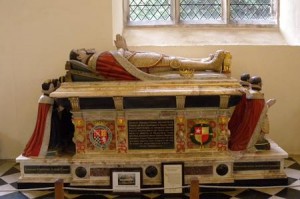 On this day in history, 19th January 1547, Henry Howard, Earl of Surrey, Tudor poet, courtier and soldier, was executed by beheading on Tower Hill.
On this day in history, 19th January 1547, Henry Howard, Earl of Surrey, Tudor poet, courtier and soldier, was executed by beheading on Tower Hill.
Surrey was the son of Thomas Howard, 3rd Duke of Norfolk, and so was the cousin of Queens Anne Boleyn and Catherine Howard. He was laid to rest at All Hallows-by-the-Tower (All Hallows Barking), but then moved by his son, Henry, Earl of Northampton, in 1614 to a tomb in the family church, St Michael’s at Framlingham.